Worries about displacing Hispanic community loom in Brewster's major redevelopment
Norma Pereira was drawn to Brewster because of the homemade beans and tortillas. She's always appreciated being able to find ingredients and dishes from her native Guatemala.
But now, everything from the stores she loves to the sense of community she's found among other Guatemalan people there will change.
Brewster's small downtown is on the cusp of a makeover years in the making that will drastically change the area Pereira knows and loves. Developers are working to buy 20 lots where mostly two and three-story buildings with storefronts on Main Street are.
"My heart belongs over there," Pereira, who has lived in nearby Carmel for 18 years, said.
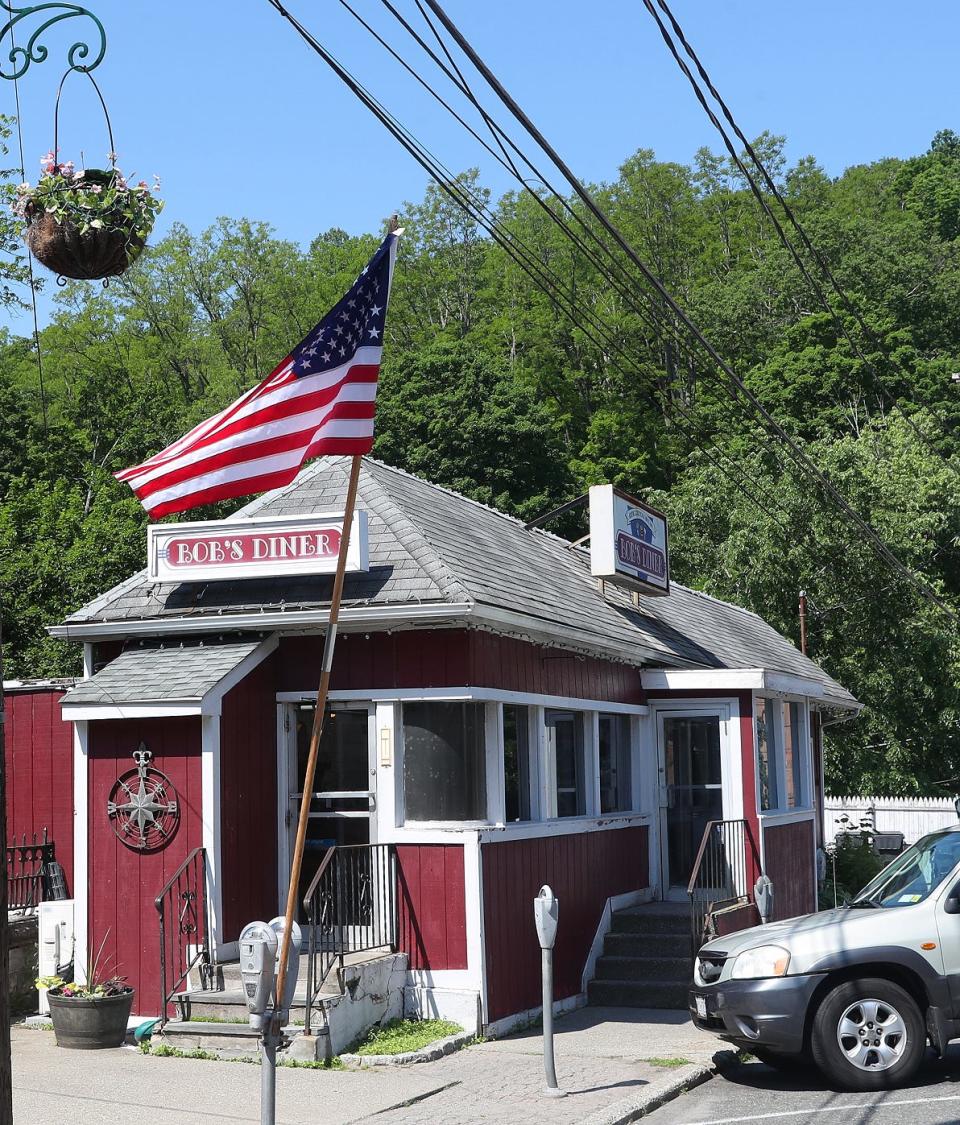
Storefronts have changed over the years and some, such as the cinema, have closed.
It's easy to see the impression Latin American immigrants have made on the small village, where the estimated annual median income in 2020 was $55,000 per household. Several Hispanic establishments dot Main Street — businesses like El Pueblo Restaurant and Lounge and churches like Iglesia Pentecostal Unida. Other businesses have been there for years, such as Pizza Place & Trattoria II and Bob's Diner, both near the train station.
Redevelopment: Brewster’s downtown could see major changes
Police: Brewster cop Wayne Peiffer pleads guilty in federal sex-trafficking case
Lawsuit: Cellphone video raises questions about use of force by Brewster police officer
Plans for the development, known both as Brewster Crossings and iPark Brewster, show three buildings with a total of 408 rental apartments and a potential brewery, café, artisan shops, a 500-car parking garage, 11,000 square feet of retail and restaurant space and 18,000 square feet of municipal offices.
Facing a redevelopment that will change Brewster so drastically, people who live and work in the village debate the pros and cons of the project as two sides of the same coin. People and businesses, many Guatemalan immigrants who've established themselves in the area, will have no choice but to move elsewhere.
At the same time, many want to see an improved Brewster. Whether that means what developers have envisioned depends on who you ask.
Pereira sees it as wiping out a vibrant immigrant community that has developed flourishing businesses and contributed to the local economy.
Vanessa Hernandez, who manages the Boost Mobile store on Main Street would like to see something new in Brewster but also likes the way it looks now. She understood the village has seen problems with overcrowded apartments but wondered if stricter code enforcement would help solve that problem.
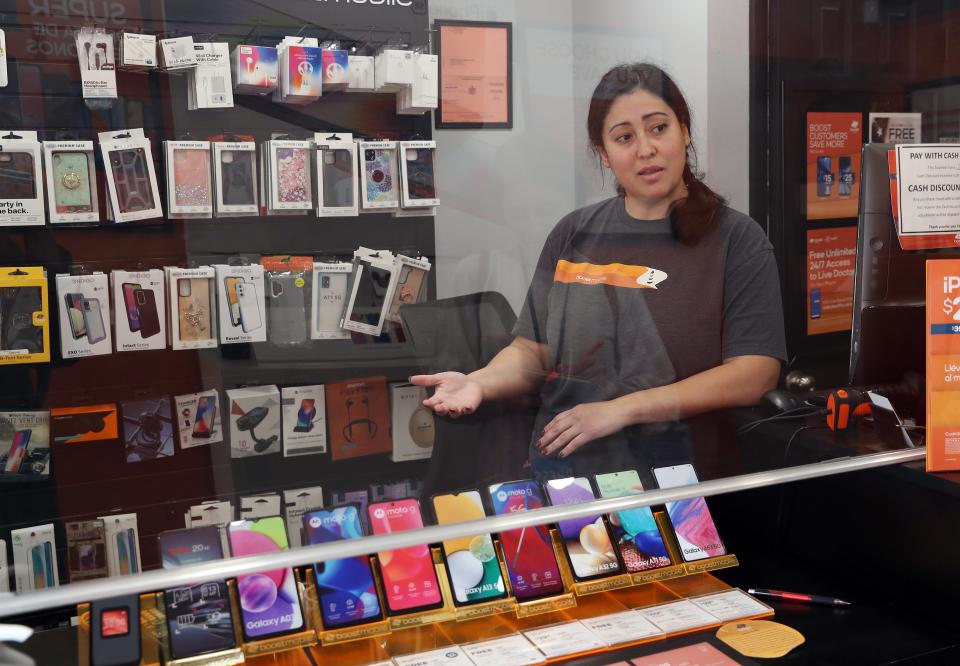
With three kids in the Brewster school district, Hernandez hopes the development will bring more amenities for families.
"It's going to have a disparate impact on my clients," said Susan Burcroff, who runs a food pantry out of an 1870s house tucked away off Main Street. The redevelopment will demolish the house. She worries her clients — about 900 people a month — won't be able to live in Brewster anymore.
Most people don't realize the development is coming, Burcroff said while standing on the wraparound porch of the house on a busy day of food distribution in early May.
"A lot of us are working class poor," said Marie Ferris, who has been getting food from the pantry for years. Alcoholics Anonymous will also have to find a new place to meet when the building is gone, Ferris said.
Information difficult to obtain
Brewster Mayor James Schoenig didn't respond to repeated attempts by email and phone to reach him to obtain information about Brewster and the development in the first half of May.
Nor did any village trustees respond to emailed questions.
But Schoenig, who draws a yearly salary of $15,600 as part-time mayor, reluctantly answered several questions after a mid-May village board meeting that a reporter attended to ask questions in person.
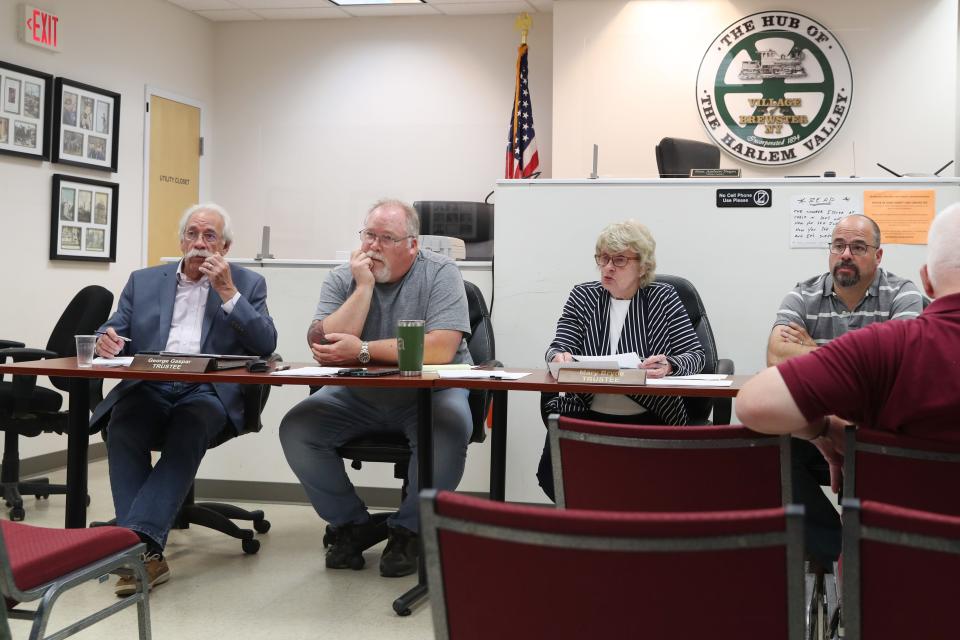
"Every time a story gets done in the press it always backfires on us with this redevelopment,' Schoenig said.
When the reporter asked about concerns from community members about work on the project going to the construction company he works for, Schoenig said, "I've addressed this issue in the papers before, so why am I going to keep hashing s--- over again?"
A review of the minutes from an April village board meeting show Schoenig responded to a question about whether the Nastasi Group, where he works, would be hired on the project, saying it would be a conflict of interest and the company wouldn't be working on it.
"So then why are you asking the question again?" Schoenig asked the reporter.
The reporter said she saw the meeting minutes but wanted to ask him about it in person. He replied: "Forget it, we're done."
During the village board meeting that night Schoenig also criticized an article in Brewster High School's newspaper on the development, saying that the high school student who wrote it got details of the project wrong. A key theme of the article was that many in Brewster's immigrant community will be uprooted. It also questioned how affordable the area would be for people who live there now.
Schoenig didn't respond to additional emailed questions before this story published, including about how the development was communicated to the Spanish-speaking population.
Documents related to the project say the development aims to leverage the area's proximity to the Brewster train station — a ride to Midtown Manhattan takes around 90 minutes — and while the project will bring more commercial and residential units, the surrounding roadways have the capacity for increased traffic.
The development will incorporate green space and improved pedestrian areas.
The project is rooted in years of discussion of how Brewster needs revitalization. Village documents show officials were talking about revitalization as early at the late 1990s.
The village signed a memorandum of understanding with Covington Development LLC located in Putnam County in 2013. National Resources came on board a few years later and is the main developer, Schoenig said, but Covington is still involved. Neither responded to questions for this story.
How businesses and residents can be required to sell their property for a development like the one in Brewster comes down to eminent domain.
"This happens all over New York state," said Philip Sanchez, an attorney representing several business and property owners in Brewster that will be affected by the development, including John Ulutas, who owns Pizza Place & Trattoria II on Main Street.
Governments can take property for a valid public purpose, Sanchez said. The village has gotten approval to use eminent domain to take the properties, so now "the question becomes just and fair compensation for the tenants and the building owners."
Building owners get paid for their properties and business owners get paid for all the fixtures they needed to run their business.
Schoenig said the developer is working with property owners directly to buy their properties.
That's typical, Sanchez said, because using eminent domain introduces a judge who will decide the value of a property, and with attorneys fees the process can be more expensive.
If they can't secure a deal with property owners, then the village would use eminent domain to take the properties, Sanchez said.
A village of a half square mile
With a population of 2,500, the village of Brewster is just a half square mile. To an outsider, where the village of Brewster ends and the town of Southeast begins can be blurry. People often refer to much of the surrounding area as Brewster. The village is nestled within the town, which has a total population of 18,000 and covers more ground.
Schoenig, who moved to Brewster in the late 1990s, told the New York Times in 2010 he was drawn to the tree-lined streets with Victorian houses. First serving as a village trustee, Schoenig was elected mayor in 2007. He has talked about revitalizing Main Street for years.
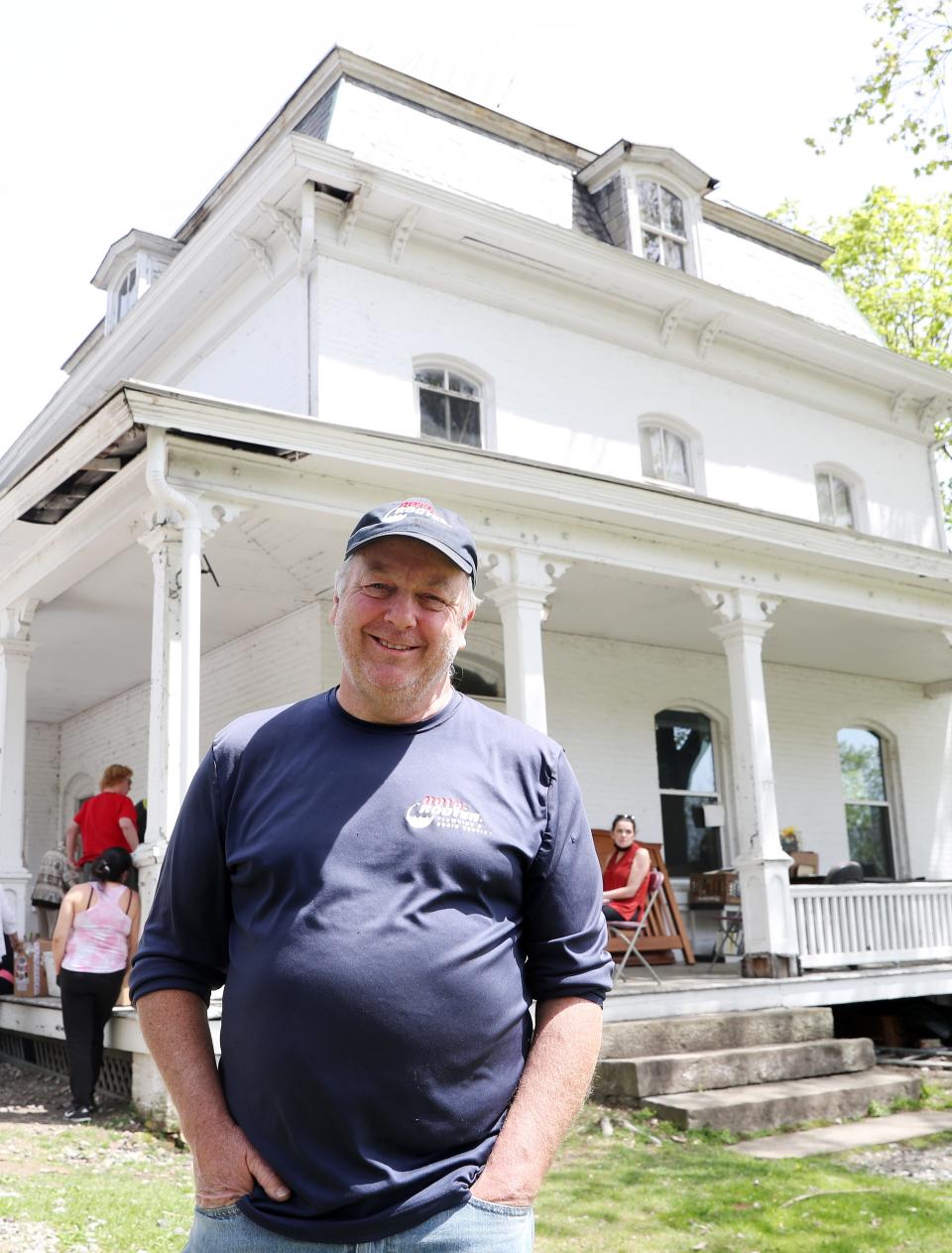
Looking down on Main Street is the Walter Brewster mansion, built around 1850. Brewster owned the land that would eventually become the village's name, but the Landmarks Preservation Society of Southeast stated it's not clear if he ever lived in the Greek Revival mansion. But John Gail Borden, of the Borden Milk Factory, and his family, did in the late 1800s.
American Community Survey estimates for 2020 said Brewster had 832 households in 2020, with 68% of residential buildings having two or more units. Seventy-seven percent of housing was renter-occupied, while 23% was owner occupied.
The median sale price of a home in Brewster in April was $438,000, according to Redfin.
For the past several decades Brewster has seen immigrants come from Latin America, particularly Guatemala, and "There's always more coming," said Hernandez, who manages the Boost Mobile store.
Sixty-one percent of the residents are Hispanic and 78% of the population is not U.S. citizens, according to U.S. Census data.
In the Brewster Central School District, which serves students from the surrounding area (at 3,000, the district serves more students than people in the village itself), 48% of students are white, while 44% are Hispanic or Latino.
The village's relationship with the immigrant community has been documented in The New York Times and Hispanic day laborers still wait for work on Main Street in the mornings, as they have for years.
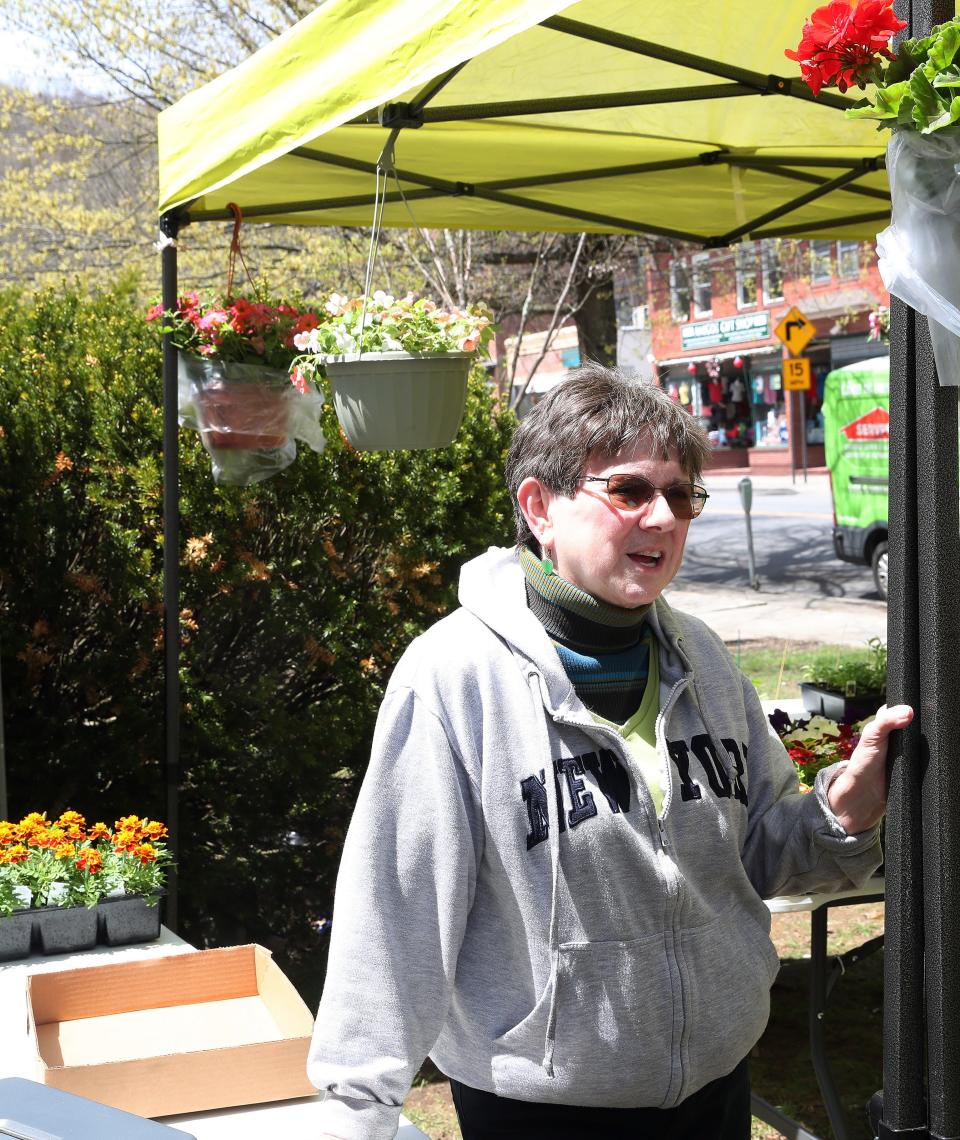
"There was an awkward phase," said Mary Simonelli, who lives in the town of Southeast and has lived in the area for 35 years. At first, it was all men coming looking for work, but "Now it's families establishing themselves," she said, "more like the American Dream."
Simonelli said her church, First United Methodist on Main Street, has shared space with two different Hispanic congregations. They congregation is "thrilled" to have more people in Brewster, she said.
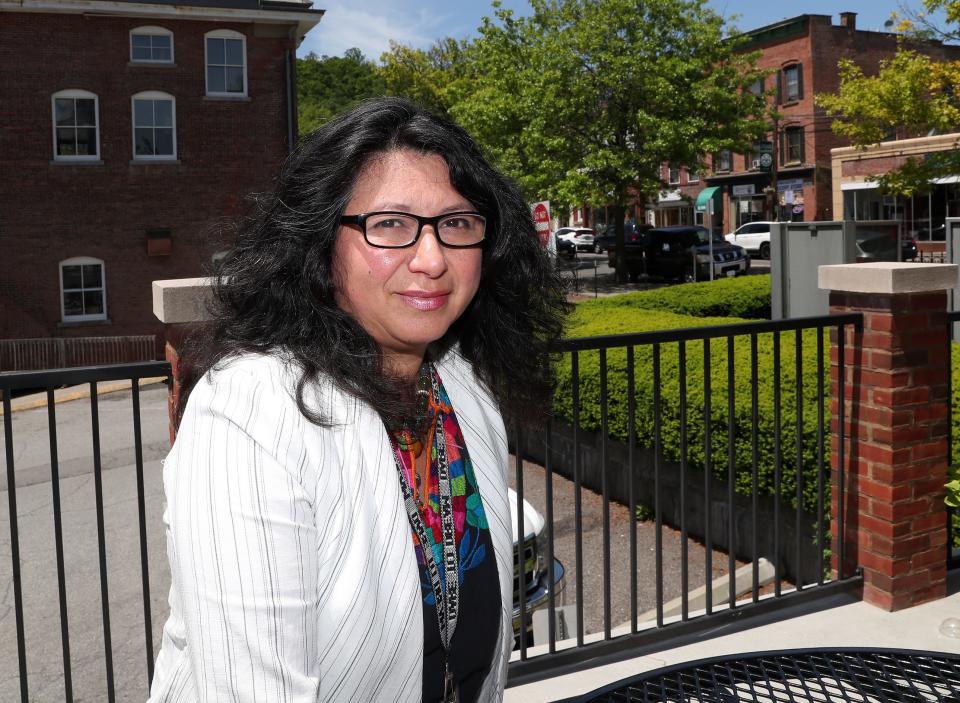
Still, Pereira, who has found a connection to the Guatemalan community in Brewster, says the Hispanic immigrants have faced hostility. She recalled instances of people throwing bottles at the men waiting for work.
Pereira credited the police department for having Spanish-speaking officers but lamented a lack of representation in local and county government.
People she's talked to in Brewster who will have to move don't know where they'll go: "They don't even feel that they have a voice."
Contact Diana Dombrowski at ddombrowski@gannett.com. Follow her on Twitter at @domdomdiana
This article originally appeared on Rockland/Westchester Journal News: Brewster Crossings, or iPark Brewster, will uproot downtown community

